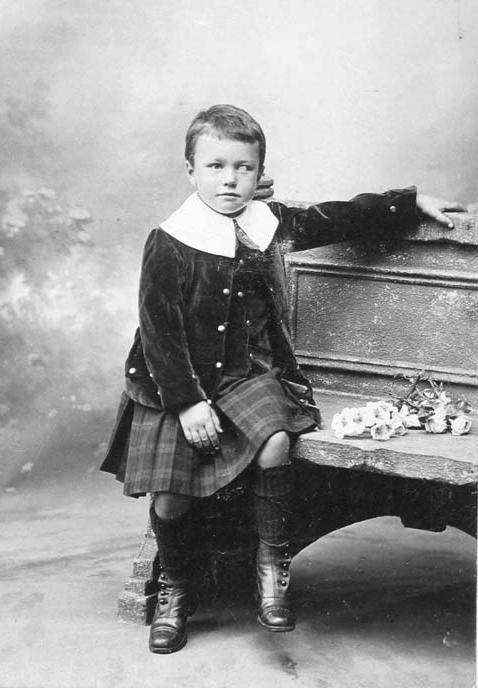

Figure 1.--This unidentified boy wears a military styled black jacket and kilt. The collar is styled like an Eton collar, but is much larger and not stiff like a stndard Eton collar. was photographed by W. Boughton & Sons, Lowestoft. This is a town in Suffolk on the North Sea coast. It is notable as the most easterly point in Britain. Some of the earliest evidence of human settlement in the United Kingdom have been found around Lowestoft. It is a port town which developed as a fishing port and in the 19th center became a seaside resort, principally because of the wide, sandy beaches. We suspect that here the boy's family was one of the visitors and not a local.
|
|
English Kilt Chronology: The 1890s
We see quite a few English boys wearing kilt outfits in the 1890s. We see boys wearing kilts with a variety of jackets. Black jackets with military buttons seem a popular choice. Some had matching vests (waiscoats). Some were done in velvet. Eton collars seem popular. As far as we can tell, kilts in England continued to be a kind of party outfits for younger boys. We see some older boys that seem to be wearing kilt outdits as a ciostume. Often the English kilt outfits were not complete Highlands outfits. Often we do not see the English boys wearing sporans. Kilts are almost always wirn with knee socks, but Argyle socks do not seem as popular as in Scotland.
HBC

Navigate the Boys' Historical Clothing kilt pages:
[Return to the Main English kilt chronology page]
[Return to the Main English kilt page]
[Return to the National kilt page]
[History]
[Usage]
[Kilt suits]
[British royals]
Navigate the Boys' Historical Clothing Web Site:
[Introduction]
[Activities]
[Biographies]
[Chronology]
[Clothing styles]
[Countries]
[Bibliographies]
[Contributions]
[Essays]
[FAQs]
[Glossaries]
[Images]
[Links]
[Registration]
[Tools]
[Boys' Clothing Home]
Created: 12:19 AM 5/7/2011
Last updated: 12:19 AM 5/7/2011



